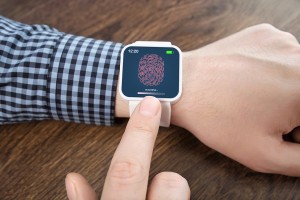The endless blizzard of rumors and speculation about Apple Inc.’s (NASDAQ:AAPL) probably upcoming iWatch continues with a report issued today by Jan Dawson of Jackdaw Research. Mr. Dawson speculates on ways that the iWatch could be turned into a commercial success rather than a resounding flop like practically all other “smartwatches” have been, and ends on the note that every commentator is currently obliged to – that we really don’t know.
The original report is available from Jackdaw Research for $500, but the gist of those portions related to Apple’s (AAPL) iWatch was described on Business Insider. The methods that Mr. Dawson suggested include the idea that the iWatch might be a payment processing device, a sort of wearable Internet-connected credit card; a replacement for membership cards and government identity cards; a convenient interface for the Internet of Things; a remote control for other devices; and so on.
 Though none of Mr. Dawson’s guesses are particularly new, they represent a useful overview of how speculation has been running. Of course, all guesses will be rendered moot if Apple Inc., always a secretive organization, has actually canceled the iWatch project due to low anticipated demand. But, assuming the project truly exists and is still actually moving forward, Apple still faces the challenge of how to make its smartwatch pay off.
Though none of Mr. Dawson’s guesses are particularly new, they represent a useful overview of how speculation has been running. Of course, all guesses will be rendered moot if Apple Inc., always a secretive organization, has actually canceled the iWatch project due to low anticipated demand. But, assuming the project truly exists and is still actually moving forward, Apple still faces the challenge of how to make its smartwatch pay off.
Some extra function beyond the obvious is clearly needed to make the iWatch a success. Smartwatches in general have shown lackluster sales and can be said to be a niche market that is close to a complete commercial failure. If the iWatch is merely a health tracker, then it is competing against a huge array of well-established fitness watches which have been on the wrists of amateur and professional athletes for many years.
At this point in time, there are few conceivable functions that cannot be duplicated by other electronics such as smartphones, tablets, or computers. The “control node for the Internet of Things” idea is probably the most potentially fruitful, since a wristwatch strapped onto one’s arm is far more convenient as a controller than a smartphone, which must be carried in a pocket, taken out and activated every time one wishes to use it, and so forth.
Amid the tsunami of speculation that the iWatch has kicked up in the muddy waters of the Internet, it is actually surprising that nobody has yet suggested that the smartwatch will serve as a video-link communicator. After all, the entire genre of smartwatches was likely inspired by the wrist radio of square-chinned fictional detective Dick Tracy. What better way to bring the iconic wrist radio up to date than to have it transmit live video at Ultra-HD resolution?



